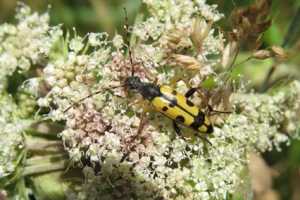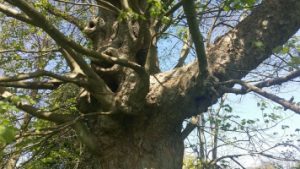
Great crested newts can pose considerable constraints on some site and as a result can be perceived negatively by developers, who doubt the scarcity and need to protect this species. As with badgers, the UK holds a very large percentage of the GCN worldwide population and consideration in this context, rather than in a local or regional context, is the reason for their European Protected status.
The following is not intended to be a comprehensive guide to GCN surveying. It aims to outline the various approaches and LPA expectations –
Survey for great crested newts are expected if:
- distribution and historical records suggest newts may be present
- there’s a pond within 500 metres of the development, even if it only holds water some of the year
- the development site includes refuges (eg log piles or rubble), grassland, scrub, woodland or hedgerows
Great crested newts may be present even if:
- the site has been ploughed, soil stripped or had ponds filled in within the last 4 years
- the breeding pond was destroyed several years ago
- the pond is muddy, heavily shaded or vegetated
- the pond contains fish
- the pond is temporary
Habitat Suitability Index (HSI)
Ponds onsite are usually classified using the Great Crested Newt Habitat Suitability Index (HSI) (Oldham et al, 2000). The HSI is a numerical index between 0 and 1, wherein a score of 1 represents optimal habitat for great crested newts. The HSI score is used to define the suitability of the pond on a categorical scale. It should be noted, however, that the system is not precise enough to conclude that a pond supports or does not support great crested newts. It does however, standardise approaches to classification of ponds across the UK and between individual assessors. Thus, there is an expectation that an HSI will be completed and provided to the LPA as part of an ecological submission.
eDNA
Traditional survey techniques have been supplemented with the acceptance by Natural England that Environmental DNA (eDNA) testing can confirm the presence or absence of GCN with a greater degree of certainty than traditional surveying techniques. This option works well if the results are negative as this is usually the end of the matter. However, a positive result, will require the completion of traditional surveys too.
Survey Methodology
In 2014, the use of eDNA to record species occupancy in ponds was approved in several EU countries for a range of species that included GCN.
The technique of using eDNA to record species occupancy in ponds involves taking water samples from ponds and testing for traces of the species DNA in the water.
eDNA is DNA that is collected from the environment in which an organism lives, rather than directly from the organism itself and can be collected through a water sample and analysed to determine if target species of interest have been present. GCN DNA may persist within water where there is occupancy for several weeks.
The GCN is considered a pond species with a relatively low detection rate using traditional methods of sampling. Usually, several negative repeat samples of the same site are needed to provide a reasonably high confidence that the species is truly absent from the siteand any individual GCN that is in the pond has a higher likelihood of being detected, even in conditions that are not conducive to traditional sampling (e.g. murky waters).
- Ease of deployment e.g. no restrictions on time of day for sampling
- More accurate detection ability for evidence of presence (GCN eDNA in water degrades in the pond in about 20 days, so a positive result shows the species has been present recently. (Thomsen 2011)
- Less Intrusive for species and potentially safer
- Appropriate survey technique for ‘murky waters’
- Some research has shown that the eDNA method can give an indication of population density rather than just occupancy (Thomsen et al, 2011).
- It is thought that a negative result will be a much stronger indication of true absence
- Survey protocols have been developed which show an accuracy of 99.3% compared to traditional survey methods which can be only 75% accurate.
Currently, for presence/absence surveys, eDNA can only be sampled between 15 April and 30 June.
GCN activity is mostly land-based and ponds are used for displaying and breeding, negative results will only mean the pond is not a GCN habitat within that breeding period.
eDNA will not provide an accurate and reliable idea of population size (i.e. numbers of newts present) so, where licencing requires it, conventional survey techniques are likely to be more appropriate.
A negative result is not always conclusive evidence that GCN are NOT present where access around the whole pond is limited. In those cases, routine surveys or more eDNA samples taken periodically are necessary.
Traditional Surveys
Traditional surveys require a combination of different methodologies, which combined are intended to firstly, reveal the presence / absence of GCN and if present to indicate the numbers of GCN present in the water body.
Methodologies
- Egg search
- Bottle or funnel traps
- Netting
- Torch survey
Presence/absence surveys of ponds
It is necessary to:
- use 3 methods per visit (preferably torch survey, bottle trapping and egg searching)
- visit between mid-March and mid-June with at least 2 visits in peak season (usually mid-April to mid-May)
- visit the site 4 times if you can’t establish presence on the first visit
It is permitted to:
- stop surveying if you detect the presence of great crested newts before the 4th visit
- assume great crested newts are absent if there’s no evidence of them after 4 visits
If GCN are present, it is compulsory to undertake a Population Size Class Assessment
It will therefore, be necessary to:
- use torch surveys and bottle trapping on each visit
- make at least 6 visits (if you found newts during the first 4 presence/absence visits)
- visit between mid-March and mid-June with at least 3 visits in peak season (usually mid-April to mid-May)
When to survey
Survey method | Best time to survey |
|---|---|
Environmental DNA | mid-April to late June |
Egg search | April to June |
Pitfall traps | March, April, May and September |
Refuge search | April to September |
Bottle or funnel traps | March to May |
Netting | mid-March to mid-June (August to find larvae) |
Torch survey | mid-March to mid-June (August to find larvae) |
The times in the table are based on typical newt activity in central England lowland.
As can be ascertained from the above, the process can be protracted and involved. As with all Protected Species Surveys, it is best to discuss your requirements yesterday. Consequently, please call or email ASAP.
Please contact us for a site specific quotation –
help@ecological-surveys-ltd.co.uk
Please call us on 0800 888 6846 / 07736 458609



